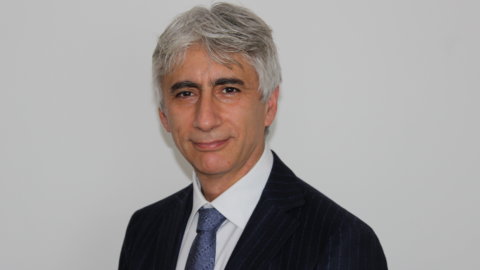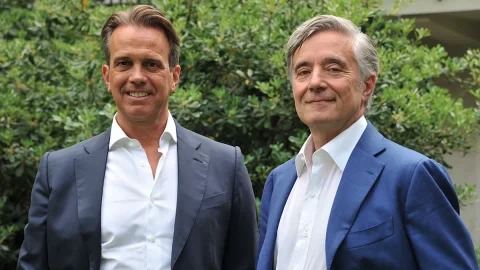With the outbreak of war between Russia and Ukraine many investors had moved on US stock market both because the economy was perceived to be in good health and because Europe was too close to the epicenter of the crisis. But things could change soon. The US has not yet priced in already hidden signals of an economic change that could lead them to a sharp slowdown. And then there could be a strong return on Europe's investors. All obviously sub judice of war evolution. He explains it in an interview with FIRSTonline Salvatore Bruno, Head of Investments of Generali Investments Partners (GIP), the management company controlled by the Generali Group with bond, thematic equity and multi-asset/balanced portfolios, as well as a range of strategies invested in private assets.
How do you assess the behavior of the markets from the beginning of the conflict until today? Where are we?
“Since the Russian-Ukrainian conflict began, investors have cautiously exited Europe and the US has essentially played the role of a safe haven market. But now we need to carefully analyze the two markets because they could have very different developments in the near future".
The US stock market has had a good performance so far, why do you think?
“On the one hand, the US stock market was buoyed by the Fed's announcement of its more restrictive monetary policy because Jerome Powell's words were read as a statement that the US economy was very strong and able to absorb the monetary kickbacks. On the other hand, investors have preferred to move away from a Europe so close to the epicenter of the war, but also to the effects of the sanctions against Russia. Thus, for a certain period, US equities assumed the role of a sort of safe haven market”.
Is there something that the US market still needs to express?
“The current US situation could change in the near future. In fact, what the investor has not yet fully grasped and which has not yet been well priced on the market is that part of the Fed announcement that concerns quantitative tightening: Powell plans to reduce the size of its operating balance sheet, which means drain money by removing liquidity from riskier assets and this will somehow impact the stock market. The interest rate market has already priced in what the Fed wants to do, as we see in the swap market already pricing in 6 or 7 Fed hikes. Maybe even more. But the stock market hasn't priced it yet and that could bring some burden. Furthermore, the growth expectations of earnings in the USA are still quite consistent, but they will have to be slightly repriced downwards and this will have an impact on the indices”.
So the US economy is facing a possible slowdown, are there already signs in this sense?
“There are now many signs in this sense, even if the war tensions have clouded the view. Signals that are under the scrutiny of the Fed which has to make monetary choices. For example, let's look at the US labor market: on the one hand the increase in wages has started, on the other there is unemployment which has reached very low levels and therefore can only go up from this point on. Then there is the real estate sector, a key sector in the US because it also finances consumption, where mortgage rates are increasing, which affects the entire rental sector and therefore also inflation. Also noteworthy is the inversion of the US interest rate curve in the 5-10 year segment, in the 5-30 year segment and now it is happening in the 2-10 year segment. There is much debate as to whether a curve inversion really signals a recession, but it is certainly telling us that something is wrong.
In summary, we could find ourselves facing a turning point when the US market starts pricing in those now hidden signals and at that point – unless catastrophic events occur in Europe – there could be a repositioning of investments on this side of the Atlantic. And it would not be strange to see signs of a slowdown in the US economy already at the end of this year”.
How could we move on the European market?
“The European situation has very different characteristics from the USA. Meanwhile, the macro situation is less flexible, less reactive, unfortunately it has to manage the fact of being close to the epicenter of geopolitical tensions and above all it suffers more from the financial impact of the sanctions that are hitting the energy and raw materials sectors.
Inflation is also of a different type than in the USA: it is exogenous inflation, on which raw materials weigh. The underlying risk is that of stagflation, ie if there were also a recession alongside inflation. This is why the ECB is moving with great prudence, its action will be gradual and conditioned by geopolitical developments. So on this side of the Atlantic, fiscal policy matters more than monetary policy, so much so that there has been talk again of leaving the Stability Pact in mothballs for a while longer.
Furthermore, the European stock market has a more value composition than the US one (which is more growth-oriented), with many banking, industrial, auto and raw materials stocks which are more cyclical and therefore more sensitive to a recovering economy and rising rates (which would mean a healthy economy), so much so that when there was talk of rising rates, the value sectors immediately outperformed”.
Could Europe therefore benefit from the change overseas? If yes, in which sectors?
“Europe could have the upper hand when the US realizes that the economy is slowing and will have to reprice earnings growth. At that point, their role as a safe haven would no longer exist. In Europe, a careful investment could be in the credit sector (bonds, debentures, etc.), where there are interesting opportunities even with a careful selection of sectors (companies, but also banks), favoring quality. In particular, the banking sector itself, in a perspective of rate hikes, could be a good investment to protect against inflation. If anything, the risk for this sector would be the looming recession. Furthermore, I would focus on more defensive sectors: some sectors of technology, some of industry”.
Based on the Russian-Ukrainian crisis?
“Everything is naturally conditioned by developments in Ukraine: if there were a military escalation, with NATO involvement, financial investment would be the least of our problems. If, on the other hand, a scenario were to open up that sees a guerrilla warfare protracted over time, the attention will go above all to alternative energy sources or sources of supply. In this case, the parameter to look at is growth: if we manage to save it, the markets will also get used to the guerrilla warfare. If instead we were to return to peace, there will be an upward movement (a relief rally) and then we will have to start looking at the fundamentals and at inflation which at that point will be cyclical and will need restrictive monetary moves" .
How do you assess the upsurge in the commodities sector?
“Certainly the biggest question mark is on commodities. We recall that they had a jump before the war started, when that excess demand occurred with the reopening of business after the pandemic ended. We'll see how the situation develops, but given the clear rise, a good portfolio will have to include some sales in this sector”.
Have they perhaps lost sight of the megatrends?
“It will be necessary to go back to looking at the megatrends, first of all ecological transition and sustainable mobility and the war theme could give them an acceleration. So pay attention, for example, to the many stocks linked to the hydrogen production chain, renewable energies, railway infrastructures. But also to utilities specialized in renewables, the circular economy, the former municipal companies involved in waste management. It will take more time, but these are themes that between ups and downs will once again be protagonists. Other important sectors will be the medical and health care sectors. Also taking into account that there is an underlying trend that looks towards a de-globalization with which to bring some productions within certain borders, not necessarily national, but European. The private debt sector is also interesting, with yields exceeding 4% which compensate for the lack of liquidity and which institutional investors, with good know-how, can invest in their portfolios”.
Geographically, do you see other interesting markets?
“Covid and Ukraine could bring disruptive changes in many fields. For example, the relationship with the countries producing raw materials must be changed, because it doesn't work. One can look at Africa for example, the only continent that will have clear demographic growth over the next 50 years and will need houses, schools and infrastructures. There are already several specialized ETFs”.
How could a retail saver move today?
“Finally, a retail saver who does not want to rely on a fund must move very carefully and, if anything, focus on those interesting sectors of the megatrends that we mentioned earlier. However, it is necessary that the diversification of the portfolio is the basis of its strategy which must in any case be very flexible: that is, the retail investor must not become attached to his own investment, but must be ready to leave it if the situation shows changes”.





